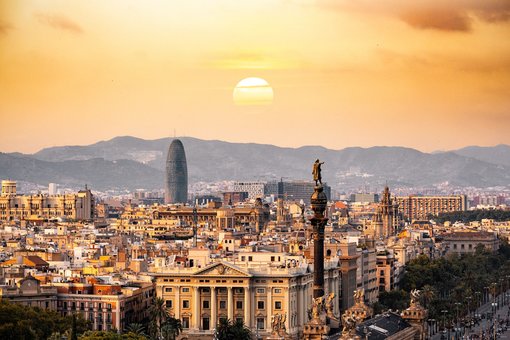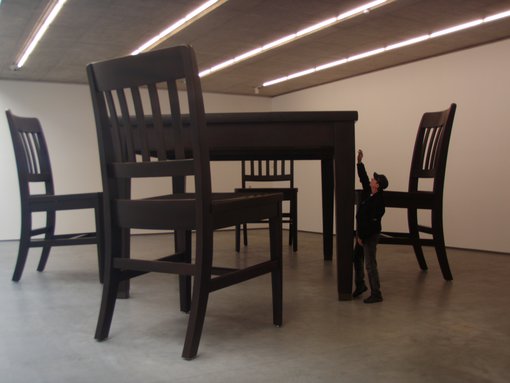The average income of US tourists flying out of the country is $109,000 per year. Depending on family size, the Pew Research Center puts the start of an upper class income at $78,000-175,000. The typical American tourist is not a budget traveler, contrary to what you might think from all the budget travel advice on the Internet.
You won't have to read many guide books to be told you must eat at something called a mensa. Mensa is the EU counterpart of an American High School Cafeteria, and yes, no doubt the quality of food at EU school cafeterias is better than in the USA, especially in France, but come on. Did you spend big bucks to go to the EU to eat in a homeless shelter? So, if you are not excited by the prospect of having to wash out one of your allowed two pairs of underwear in your Rick Steves' backpack in the bathroom sink at the gang toilet down the hall in a noisy hostel every night, read on. Forget everything you see on TripAdvisor or Yelp or in guide books on great budget restaurants. In some respects, there is no such thing, just liyke Mexican Cuisine is an oxymoron. At best, there is cheap food that won't kill you and has some flavor. There are a very few, but important, exceptions to this rule:
1] Bratwurst stands in Germany. I would never visit Munich or the Mosel Valley without having a "bratwurst mit snef und brot" at the open air market near the third metro stop NE of the main train station in Munich. A giant wheel with various sausages on it rotates over a wood fire underneath what must be the world's largest umbrella. Same goes for the hole in the wall wurst stand-- take out only-- in Bernkastle's old town. Makes a good lunch for $3-4, but not because it is cheap. Do it because it is a fine example of sensible traditional local cuisine.
2] "Frites" road side trucks in France, superb French fries.
3] A Turkish speciality whose name I can't remember, but its essentially a kabob not cooked on a stick.
4] Soup street vendors in China.

If you are the typical American traveler to the EU, you can afford to eat like the local upper middle class, if not even better, but I recommend sticking with middle class restaurants because that is truly the way Europeans eat, and if you are traveling In the EU, for the best experience on your trip, you should eat like the EU does. Places that charge more than $100 for a meal are way beyond where the locals really eat. At first glance, prices in EU restaurants will seem very high, but they are not because the listed price includes the food, the tip, and all taxes. Compare that to the menu price in the USA where tip and taxes can easily add 20-30% to the menu price, but in the EU, what you see is what you pay. The famous budget busting Michelin stars restaurants are not where the locals go to eat every day.
Their customers are:
1] very rich businessmen whose meals are paid for by their job
2] special, very special, occasions for the locals, and
3] curious tourists who want to see what its all about, and this is an experience worth having at least once. Here's an idea of what it costs at a three star Michelin restaurant located out in the country with low real estate overhead (prices in Euros): appetizer 95, chicken breast 185, desert 28. That adds up to roughly $400 per person (but tax and tip are included.) But they do offer less expensive fixed price meals starting at 60 euros per person (lunch) and a 230 euros per person tasting menu...

After many trips to the EU, we have no doubt about this: France has the best food, but you have to stick to French food and avoid pizza, sushi, KFC, kabob/kabop, Starbucks, McDonalds and their ilk. After France, Germany and Austria have the most consistently good food. Despite its reputation, eating in Italy bothers me because quality is so inconsistent. The best and worst pizza we ever had were both from hole in the wall carry out only pizza places in Rome.

Christmas Market
With more than 600 days of eating in EU restaurants under my belt (small pun there), I've narrowed down what I order for dinner to what the EU alwys does better than American restaurants. In other words, you probably can't get this stuff at home. . At first, we widely ranged across the offered choices to get a full taste of EU food, but now, I try to limit it to veal, chicken, and pork. All are generally of better quality than what we get in the USA, which is partly due to better quality ingredients in the EU and partly due to better quality chefs. Veal has the biggest difference. First of all, it is more widely available in the EU . Second, it is of better quality (except for Italy's cheap veal. Thier high priced veal is fine). Third, it is less likely to be overcooked by chefs who aren't paying attention to what they should be doing. EU chicken tastes better than USA chicken because it is mostly grass fed (free range) rather grain fed (might also be different breeds) and chefs in the EU are for more careful to not overcook chicken. Over cooking produces a meat more akin to cardboard in texture and flavor than what chicken should be. Pork is served with a pink center, which, like with properly cooked chicken, keeps it from turning into something like cardboard and makes it juicy and more flavorful. Don't worry about eating pink pork in the EU. Decades ago their government regulators eliminated the causes of pink pork diseases from the feed EU pigs eat.
EU beef is generally free range and comes from different breeds of cattle than in America. The taste is different, and the meat more chewy (many call it tough). We don't eat beef in the EU except for stews or long cooked roasts.
Vegetables, especially green beans and potatoes, are also different breeds than what is served in the USA. Standard America potatoes are larger and less tasty than potatoes in the EU. So are green beans. France has the best green beans, Germany the best potatoes.
You will not be served a lettuce salad at any decent restaurant in the EU at the start of your meal. Salad is properly served at the end of the meal, and that's how we now do it a home.

Best breakfast- Kaysersberg
You may or may not get served bread with your meal. You may or may not be changed extra for bread.
The famous Michelin Guide has 8 restaurant rating categories (54 categories with all the qualifiers included), not just the three with stars that are widely reported. In addition to the stars, there are ratings shown by crossed knives and forks, they look like x, xx, xxx, xxxx. Across the 8 basic categories, the ratings are mishmash of food quality, how fancy the place is, and the overall experience. An x restaurant is very different from a ***, but both represent a good meal for a restaurant its category. If its not rated, the idea is to stay away and find a rated place in the same price range. Our sense is that xxx represents good family eating, something better than Olive Garden or Red Lobster in the USA. We also prefer red colored xxx to black, and bird symbols to no bird and red birds to black birds. A Bib meal is always a good deal.









